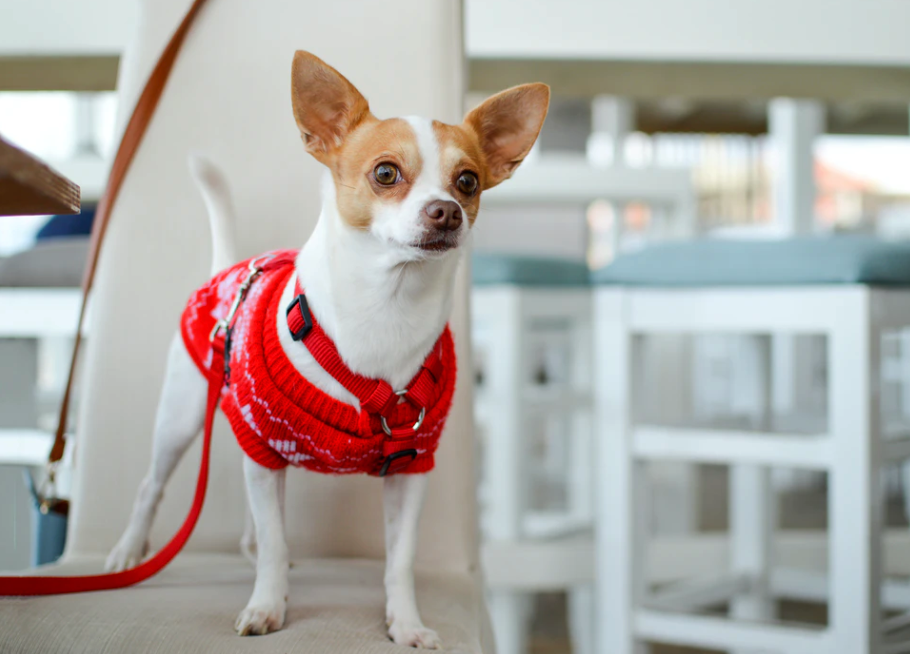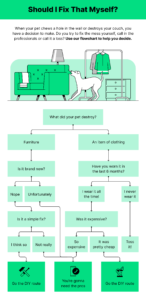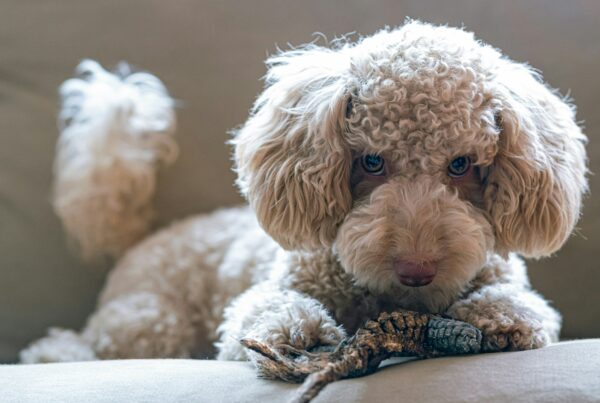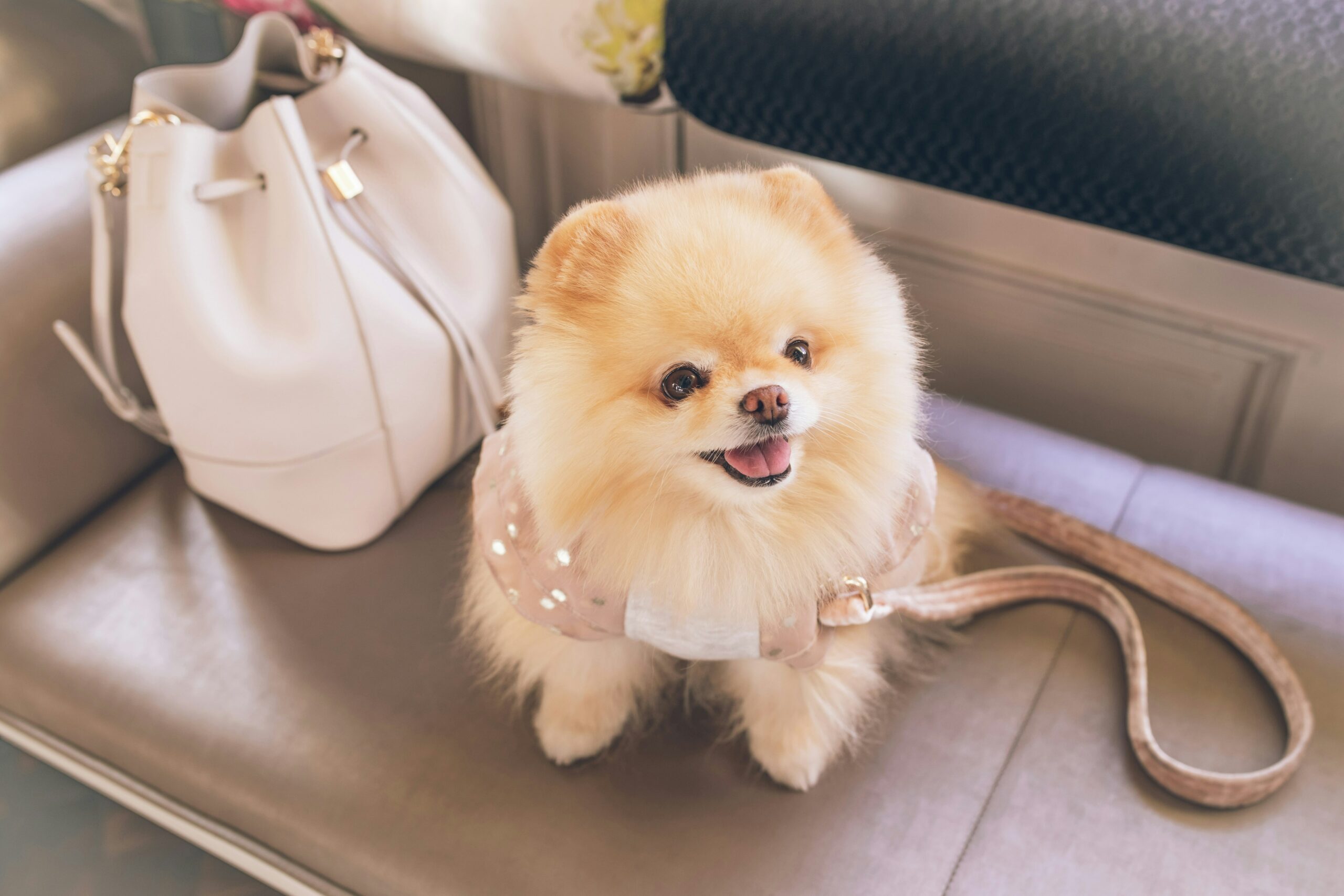Welcoming a new puppy into your home can be a source of joy and excitement as you gain a loyal and affectionate new member of the family. The downside to this is that puppies tend to have a penchant for wreaking havoc on their homes. Especially if your new pet has separation anxiety, you might come home to find they’ve chewed up clothes, pillows, and furniture or peed all over the floor.
Fortunately, there are a number of precautions you can take to pet proof your home before bringing in a new puppy. By taking the time to anticipate and address issues your new pet will face in different spaces around the house, you can feel assured you’re protecting both your home and your puppy. Here are 12 ways to pet proof your house before bringing a new puppy home.
Store Small Objects Out of Reach
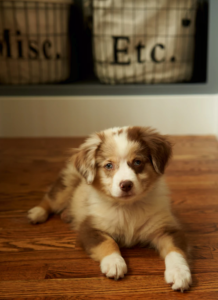
Before bringing your new pet home, go through your house and pick all small items off the floor, since they could pose a choking hazard to your dog. Knickknacks, books, remote controls, and similar objects should be stored on high shelves, out of your pet’s reach. If you have children who leave toys on the floor, make sure the toys are put away. In the bathroom or bedroom, look out for hair accessories on the floor and make sure lotions and lip balms are stowed out of a pet’s reach. Remember, your puppy will see any object on the floor as its next potential chew toy.
Cover Electrical Outlets and HVAC Vents
Protect your pet from possible injury by making sure all electrical outlets and HVAC vents within its reach are covered. Electrical cords are another hazardous temptation for puppies who love to chew, so make sure to either cover them up or stow them out of reach. Similarly, it’s a good idea to start charging your devices on a high shelf so you won’t have to worry about your puppy chewing on the charging cable. And if you plan to let your pet play in your yard, block their access to electrical boxes, HVAC units, and similar systems.
Use Gates and Doors to Keep Pets out of Problem Spaces
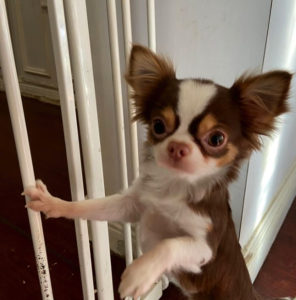
If there are areas in your house that you’d rather keep off limits for your new dog, make sure to keep doors closed or install safety gates to keep the pet out, the same way you might for a toddler. Some spaces you might want to keep your puppy out of include the kitchen, bathrooms, closets, and the garage.
Keep Cabinets and Trash Cans Closed
Many new puppies are inquisitive and like to explore their new environments. If your pet is like this, you’ll want to block off their access to spaces where they could get trapped or make a mess. Make sure to keep kitchen and bathroom cabinet doors closed, and install childproof locks if your puppy turns out to be an especially determined explorer. In addition, get lids to cover all your trash and recycling bins so that your puppy doesn’t get in and make a mess. Similarly, make sure to keep your dishwasher closed and toilet lids shut to prevent your puppy from getting into those potentially hazardous spaces.
Store Dangerous Substances Securely
Protect your new pet from harm by ensuring that any toxic substances are stored securely out of the puppy’s reach. This includes cleaning supplies, medicine, and any food that’s toxic to your pet. Store these substances on high shelves or locked cabinets to prevent your puppy from stumbling upon them. Also make sure to move exercise equipment and other objects that could pose a risk of injury for your pet, and keep loose and hazardous kitchen supplies put away when not in use. If your puppy will have access to the garage, ensure sharp objects like nails and saw blades are stowed away, mouse or insect traps are removed, and chemicals and paint are safely stored out of the pet’s reach.
Spray Anti-Chewing Products
New puppies love to chew on just about anything they can get their teeth on. An effective way to deter them from gnawing up your house is to spray anti-chewing products on things such as table legs, baseboards, and cabinet corners. These bitter sprays are harmless to your pet and are usually safe for both fabric and hard surfaces.
Remove Additional Chewing Temptations
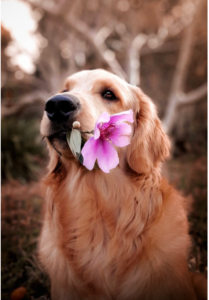
Depending on how much free range you plan to allow your puppy in your house, go through the different rooms and put away any other items that could present temptations to a pet who loves to chew. Make sure not to leave clothes or pillows on the floor in bedrooms the puppy will be allowed to enter. Tuck the corners of sheets and bedding under the mattress so the puppy won’t chew on loose ends. In bathrooms, take toilet paper off the roll and store it in a cabinet where the puppy can’t access it.
Cover Gaps
While exploring your house, a small puppy may squeeze into tight spaces you don’t want it getting into, and may get stuck. Look out for crannies such as gaps between cabinets and appliances, under the couch and bed or a laundryshoot where your puppy might nose around and get into trouble, and cover them up.
Create a Puppy Bed
Set apart a space for your puppy to sleep and relax as it adjusts to its new home. You might opt for the security of a kennel or just make them a soft bed, complete with toys, blankets, and something that smells like you. You could arrange your puppy’s space in a common area such as the living room, or if you’d like to keep them closer but aren’t quite ready to share your bed with your dog, give them their own bed in your bedroom.
Anticipate Accidents
As you begin potty training your new puppy, be prepared for it to have a few accidents in the house. To protect your floors from the inevitable messes, put down pee pads or switch to water repellent carpeting. Put rugs and mats away until your pet is fully potty trained.
Remove Toxic Plants
Both inside and outside the house, make sure your plants are non-toxic to pets. Some plants that are toxic to dogs include ivy, aloe vera, jade, lilies, tulips, azaleas, and daffodils. Check that the plants you keep around your house and in your garden or yard will be safe for your new puppy.
Keep the Yard Clean
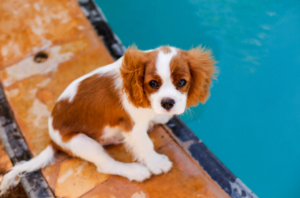
If your puppy is going to be spending a lot of time outside in your yard, make sure it’s a safe area for them to play and explore. First, make sure the area is securely fenced off to keep the puppy from getting out. Patch up any holes in your fence that your new pet might try to escape through.
Next, be aware of the chemicals you use on your lawn. Don’t let your puppy out in the yard when you’re using hazardous weed or pest control chemicals, or use eco-friendly products to ensure that your pet is safe at all times.
Finally, keep your yard clean and safe for your pet. Don’t leave any lawn care equipment out that could potentially injure your puppy. And consistently clean up puppy waste in the yard. If your pet will be outside for an extended period of time, remember to leave out food and water.
Acclimating Your New Puppy
Once you finish puppy proofing your house and finally bring home the newest member of the family, there are a few more things you can do to begin training your puppy and making it feel at home in your home.
First, invite over some friends with pets so that your new puppy can socialize and adjust to interacting with other people and pets. Next, carry treats around with you so that you can immediately reward good behavior when your puppy exhibits it and begin reinforcing positive habits.
Additionally, you can discourage destructive behavior by switching out your puppy’s toys every few weeks. That way your pet doesn’t get bored and decide to turn your furniture, pillows, clothes, or other possessions into its newest chew toys. More importantly, keep your puppy happy. Spend time playing with and taking care of your new pet, so that its energy goes into forming a positive bond with you rather than destroying your house.
What to Do When the Damage is Done
So what do you do when it’s too late and your puppy has chewed up your favorite piece of clothing, stained your carpet, or left a hole in your wall? Even after puppy proofing your house, accidents can still happen. So when they do, should you try to fix the damage yourself, or hire a professional instead? Depending on the item and the type of damage done, trying to DIY a repair could end up being more costly than paying a professional. If you’re not sure which route to take, try consulting this flow chart from Hippo below to decide what the best choice is for your situation.
Your Checklist for Puppy Proofing is now in Qued up for chez puppy, how’s your knowledge about Puppy Proofing Yourself from Preventable Dog Bites and Puppy Nibbling?
photo cred:
https://unsplash.com/photos/TPbqNoEZdT4
https://unsplash.com/photos/2loCDyUrRtw
https://unsplash.com/photos/9xVERi2gR1M
https://unsplash.com/photos/2s6ORaJY6gI
Love our content? Share it with a friend or link it to social media. Like short clips of cute household pets? Training tips? Follow us on instagram @nydognanny or on YouTube at nydognanny. Have some news you needs to get to dog and cat parents stat? Email info@newyorkdognanny.com with your article pitch.

